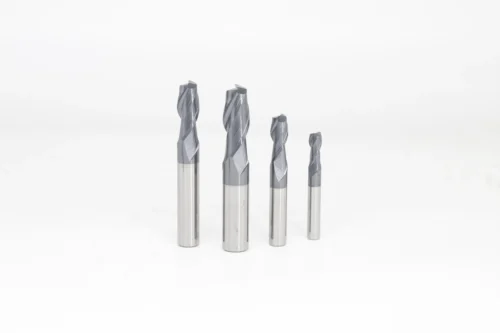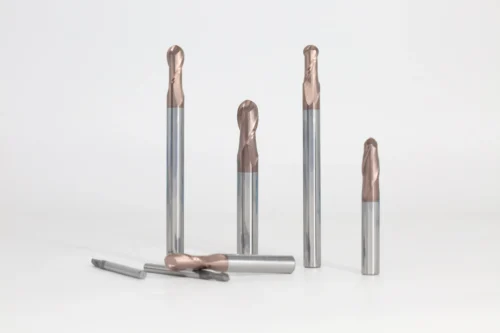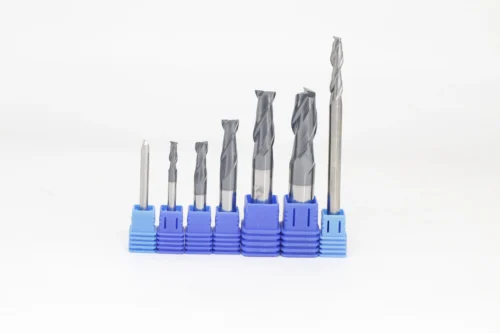Flat end mill VS ball end mill
We use flat end mills and ball nose end mills as two commonly used milling tools. We also call flat end mills square end mills. The main differences among them reflect in the structure, processing objects and applicable scenarios.
| Structural design | Main Application | Cutting characteristics | |
| Flat end mill | The insert head has a flat bottom (right-angle end face), and both the side face and the end face have cutting edges. | Plane processing: such as milling planes, steps, and right-angle contours. | The cutting force is evenly distributed, suitable for high feed and large cutting depth. |
| ball end mill | The cutter head takes on a hemispherical (arc-shaped) shape and distributes cutting edges along the spherical surface. | Transition fillet processing: arc transition at the corner of the workpiece. Finishing: obtain smooth surface through continuous cutting. | The cutting force is concentrated at the tip of the ball head, which is prone to vibration and wear. |

Which is better, a flat end mill or a ball end mill?
There is no absolute “good or bad” distinction between flat-end end mills and ball-end end mills. The key depends on the specific processing requirements, workpiece shape and processing goals.
Flat-end mills are more suitable for rough machining, and ball-end mills are more appropriate for fine machining.

2. Performance Comparison
| characteristic | Flat end mill | ball end mill |
| Processing efficiency | High (suitable for rough machining) | Low (mainly finishing) |
| Surface quality | High quality of plane surface, step marks on curved surface | The curved surface is smooth, and the center of the flat surface is easy to wear |
| Tool life | Longer (uniform cutting force) | Shorter (tip is prone to wear) |
| Programming complexity | Simple (2.5 axis path) | Complex (3D path planning required) |
| Applicable Materials | Hard materials, high rigidity workpieces | Soft materials or complex curved workpieces |

Summary of selection suggestions
Choose a flat-end milling cutter: for efficiency, processing flat or right-angle features.
Choose a ball-end milling cutter: for processing complex curved surfaces, fillets or high-precision surfaces.
